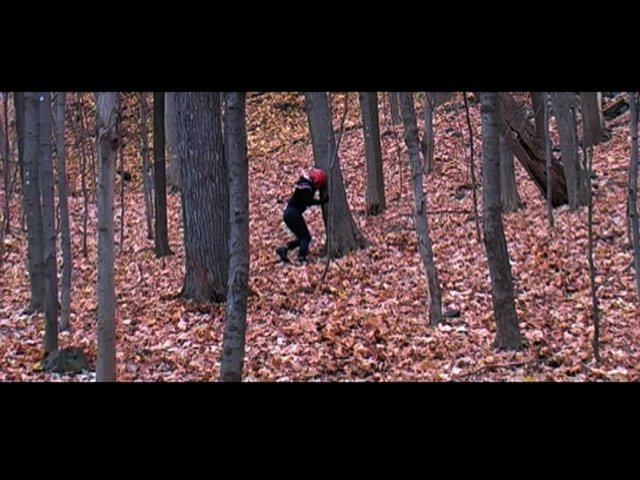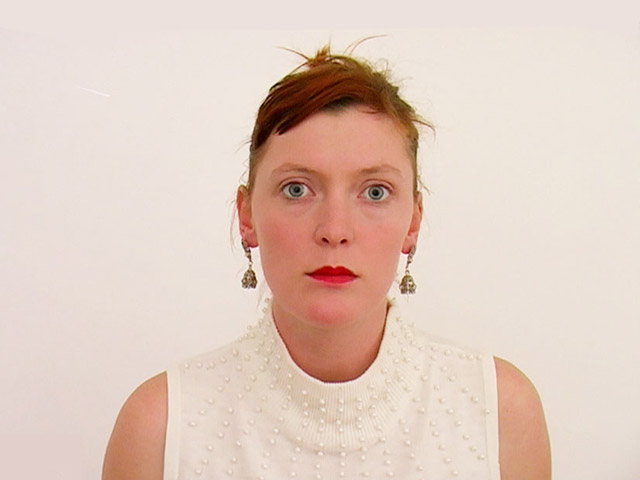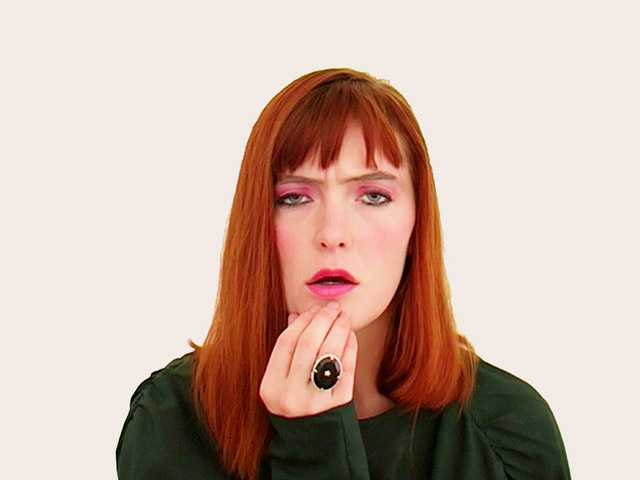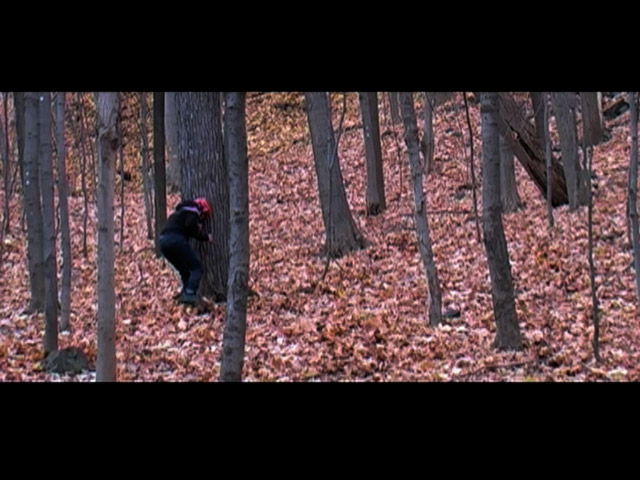
Anna Byskov
11.06.2011
rue de L'autonomie 9 | 1070 Brussels
Nl
Het werk van Anna Byskov (Ecuador, 1984) evolueert door onduidelijke zones van non-sense, contra-sense, of "anti-sense", het absurde zal constant de overhand behouden. Ze creëert vaak verschillende personages in haar video's die geconfronteerd worden met vraagstukken van actie of communicatie, een poging om een taak uit te voeren zijn steeds overrompeld, gebruikmakend van frustratie, auto-spot en de herhalingen van gebaar en woord.
En
Works by Anna Byskov (Ecuador, 1984) evolve through indistinct zones of non-sense, contra-sense, or "anti-sense"; the absurd will consistently prevail. She often creates different characters in her videos who find themselves faced with issues of action or communication, attempting to complete a task are consistently blindsided, thereby producing frustration, auto-derision, and repetitions of gesture and word.
Fr
Les vidéos et interventions performatives d'Anna Byskov
(Equateur, 1984) évoluent dans des zones où les frontières entre non-sens, contre-sens, et «anti-sens» sont floues ;
l'absurde l'emportera toujours. Elle crée différents personnages qui se trouvent confrontés à des enjeux d'action ou de communication. En tentant d'accomplir une tâche sans but, elle produit une frustration, une auto-dérision, dont découlent des répétitions de gestes et de mots.

Interview with Anna Byskov
Or Nothing: Your videos are close to performance. You involve your own body doing actions but it seems that these actions can’t exist without video. How can you explain your relation with video?
Anna Byskov: Even though I use myself in my videos and my performances, I like to distinguish the two media.
When I call my work video, it is usually because I have control over the camera. I am in front of and behind the scenes. I choose the frame, the space, the area, the landscape for my context.
For performance, I usually deal with the place I am offered and leave the responsibility of filming to the spectator, a friend or a professional.
I can even go to internet later and download my performance that someone might have happened to see and filmed. Usually, the videos that I have of my performances are just a record of what I do. I don’t really use them as a work of art but as an archive of my performance.
I will find a means of gathering together all my performances, I might consider using my video records of performances as an installation.
Why do I use video more than anything else? There is always a surprise when we discover what has been filmed and I like that intrigue. It gives some kind of adrenaline to play with the rhythm and tone. I feel there is a new discovery eachtime in editing.

ON: Your first videos were more theatrical. You used humor differently maybe more burlesque than pathetic. How can you explain that difference ?
AB: I work differently when I am concentrating on a video that deals with language or a video that deals with movement. When I involve language in my videos I like to concentrate on how to give a humorous touch or how to avoid it. When I am on the subject of gesture and movement, even though it is burlesque the result is often more tragic.
I use burlesque in mostly everything but the outcome can be more tragic or more comical.
Failure is the main motor of my work, but it is true that when language is involved in failure, there is often a comical touch mixed with irony.
When I work on movement, I usually use repetition. It makes the situation more pathetic and tragic. Failure takes hold in the anguish of losing control and failing.
ON: About your video Bump, you quote the fantastic book How to fail completely his life in eleven lessons by Dominique Noguez. Can you explain better your relation with failures, especially in Bump ?
AB: I do not think I can give any answers to my work even though my head is full of questions. I do not think I can even pull out a question. But my work can give some kind of poetical outline of how I perceive, realistically, ironically, pathetically (...) the individual. I like to involve the individual in some kind of social context and point out the struggle, the inevitability of failure and the determination to succeed in whatever the purpose. The absurdity of it is, that I don’t quite know what goal I’m talking about, (failure or success?) or simply life... and I do not even have any wish to claim, assert or denounce anything. In How to fail completely his life in eleven lessons by Dominique Noguez, I found a good compromise between the humorous and the pathetic sides of the action. Sometimes, I exaggerate and make pathos nearly intolerable...
ON: You choose Erik Satie in Bump. I can’t perceive if it is totally ironic or poetic. How do you feel your choice?
AB: The action in Bump is tragic and pathetic. I could even consider it "too much". I wanted to emphasize the aspect "too much" by adding music.
What I like about Satie is that everybody likes Satie. It's true that there is a certain universal melancholia in his Gymnopedies.
It is also considered "musique de salon" which can just add an atmosphere to the environment but after several repetitions it enters the dimension of irritation.
I would say that the poetical aspect is Satie’s genius in being able to create tunes that are touching and sentimental but can get on our nerves after a while.
I thought the music would add atmosphere and emphasize the pathos of the action and of the environment it is set in.

ON: You are interpreting this video as a live performance. Can you explain to us your performance towards the video Bump? Is it the first time that you adapt a video as live performance?
AB: I would love to do a performance along the same lines but of course slightly different. Here is the outline of my performance that is somewhat an adaptation of my video Bump:
Exaltation of the void:
Autoderision is a subject that I often use to emphasize situations that slip out of control. I combine and repeat empty actions to create an atmosphere of frenzy.
I would like to do a performance that takes place outside on some kind of rooftop. We would be able to have a view over the city. In this case, the view represents the achievement of happiness. I try to move forward and am continuously blocked by invisible obstacles. Frantically, I start hitting out and throwing myself against the violence of the void. The struggle becomes dramatic, fierce and desperate.
I want to confront the dysfunction between the real and the virtual world that I have triggered with the subjectivity of my imagination that cannot be dissociated from the objectivity of reality. My body is some kind of flipper ball that is flicked from one barrier to the next. Trying to access the ideal of exalting happiness is exhausting and finally hopeless. I cannot win the fight against the invisible obstacles surrounding me and, as usual, I achieve nothing.